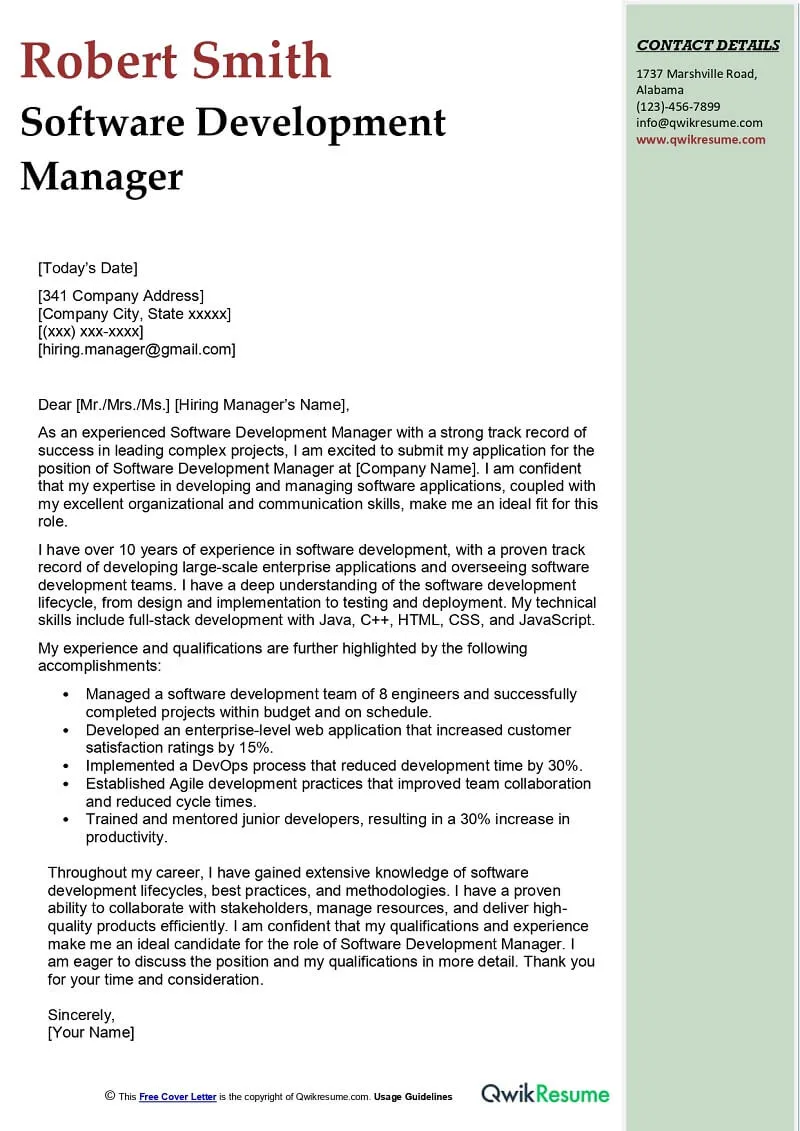What is a Software Development Cover Letter
A software development cover letter is a crucial document that accompanies your resume when applying for software engineering or related roles. It serves as an introduction, allowing you to showcase your personality, passion for coding, and suitability for the specific position. Unlike a resume, which provides a factual overview of your skills and experience, a cover letter enables you to tell a story, demonstrating how your qualifications align with the company’s needs and the job’s requirements. It’s your chance to make a strong first impression and convince the hiring manager to delve deeper into your application.
Why a Cover Letter Matters
In the competitive field of software development, a well-crafted cover letter can significantly boost your chances of landing an interview. It provides context to your resume, explaining why you’re interested in the role and the company. It highlights your relevant skills and experience, demonstrating how you can contribute to their team. A cover letter allows you to personalize your application, showing that you’ve taken the time to understand the role and the company’s values. Many hiring managers consider a cover letter an essential part of the application process, as it reveals your communication skills, attention to detail, and enthusiasm for the opportunity.
Highlighting Skills and Experience
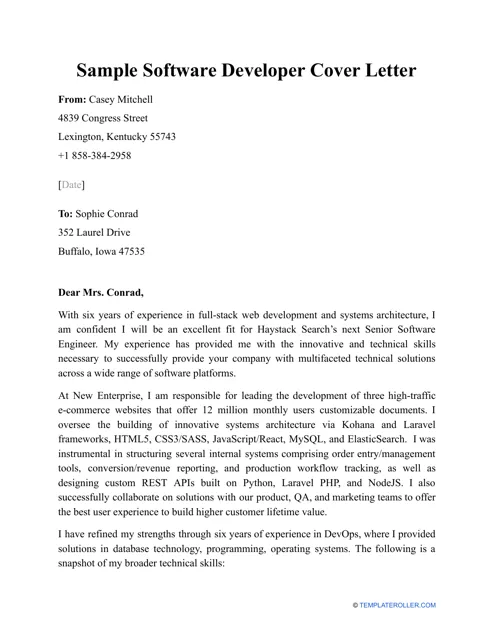
When writing your cover letter, it’s important to highlight your relevant skills and experience in a clear and concise manner. Start by identifying the key skills and qualifications mentioned in the job description. Then, provide specific examples from your past projects or work experience where you’ve utilized these skills. Instead of simply listing your technical abilities, explain how you applied them to solve problems, achieve goals, and contribute to a team’s success. Quantify your accomplishments whenever possible, using metrics and data to showcase your impact. This will make your cover letter more compelling and demonstrate the value you can bring to the company.
Essential Components of a Cover Letter
A well-structured cover letter consists of several key components that work together to present a compelling case for your candidacy. Each section serves a specific purpose, from establishing contact to summarizing your qualifications and expressing your enthusiasm. By including these essential elements, you can create a cover letter that effectively grabs the hiring manager’s attention and increases your chances of getting an interview. Proper structure makes your cover letter easy to read and allows the hiring manager to quickly find the information they need.
Contact Information
Begin your cover letter with your contact information, including your full name, phone number, email address, and optionally, your LinkedIn profile URL or personal website. This information should be clearly displayed at the top of the document, allowing the hiring manager to easily reach you. Ensure your email address is professional and appropriate. Double-check all the details to avoid any errors that could prevent the recruiter from contacting you.
Professional Salutation
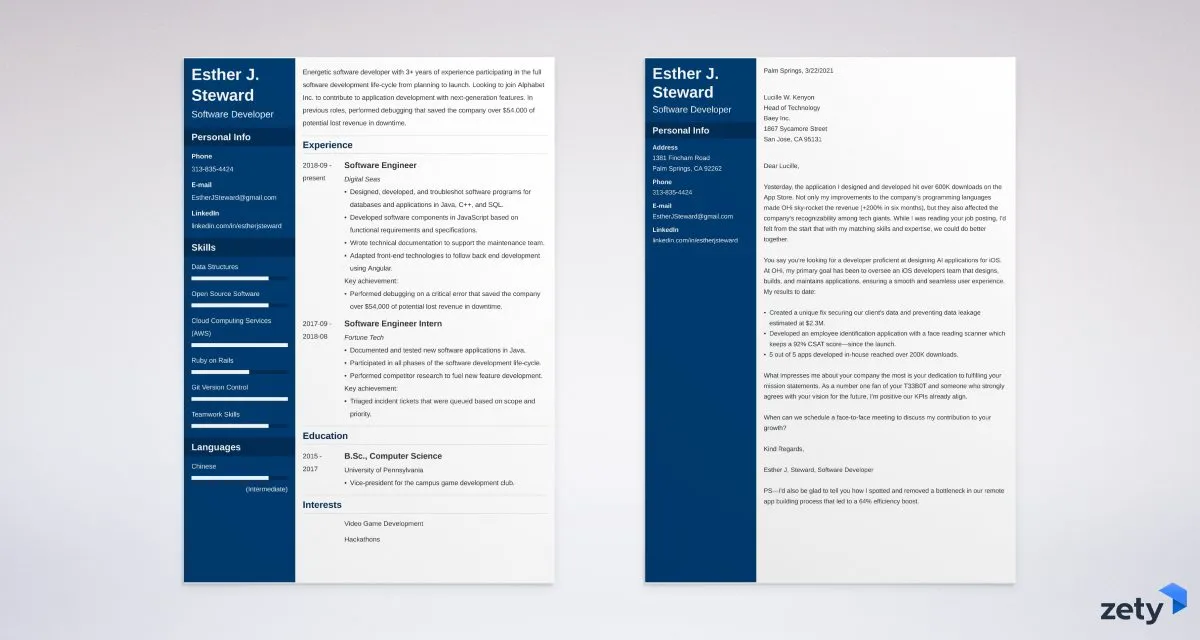
Address the hiring manager by name if possible. Research the company website or LinkedIn to find the name of the person who will be reviewing applications. If you’re unable to find a specific name, use a general salutation like “Dear Hiring Manager” or “Dear [Company Name] Team.” Avoid overly casual greetings and maintain a professional tone throughout the letter.
Opening Paragraph
Start your cover letter with a strong opening paragraph that immediately grabs the reader’s attention. Clearly state the position you are applying for and where you found the job posting. Express your enthusiasm for the opportunity and the company. Briefly highlight your most relevant skills or experiences that align with the job requirements. The opening paragraph should set the tone for the rest of the letter and make the hiring manager want to continue reading.
Body Paragraphs
The body paragraphs are the heart of your cover letter, where you expand on your qualifications and explain why you’re a good fit for the role. Use these paragraphs to showcase your skills, experience, and achievements in detail. Provide specific examples from your past projects or work experience, demonstrating how you’ve used your technical skills to solve problems, contribute to a team, and achieve results. Tailor your content to the specific requirements of the job description and the company’s needs.
Tailoring to the Job Description
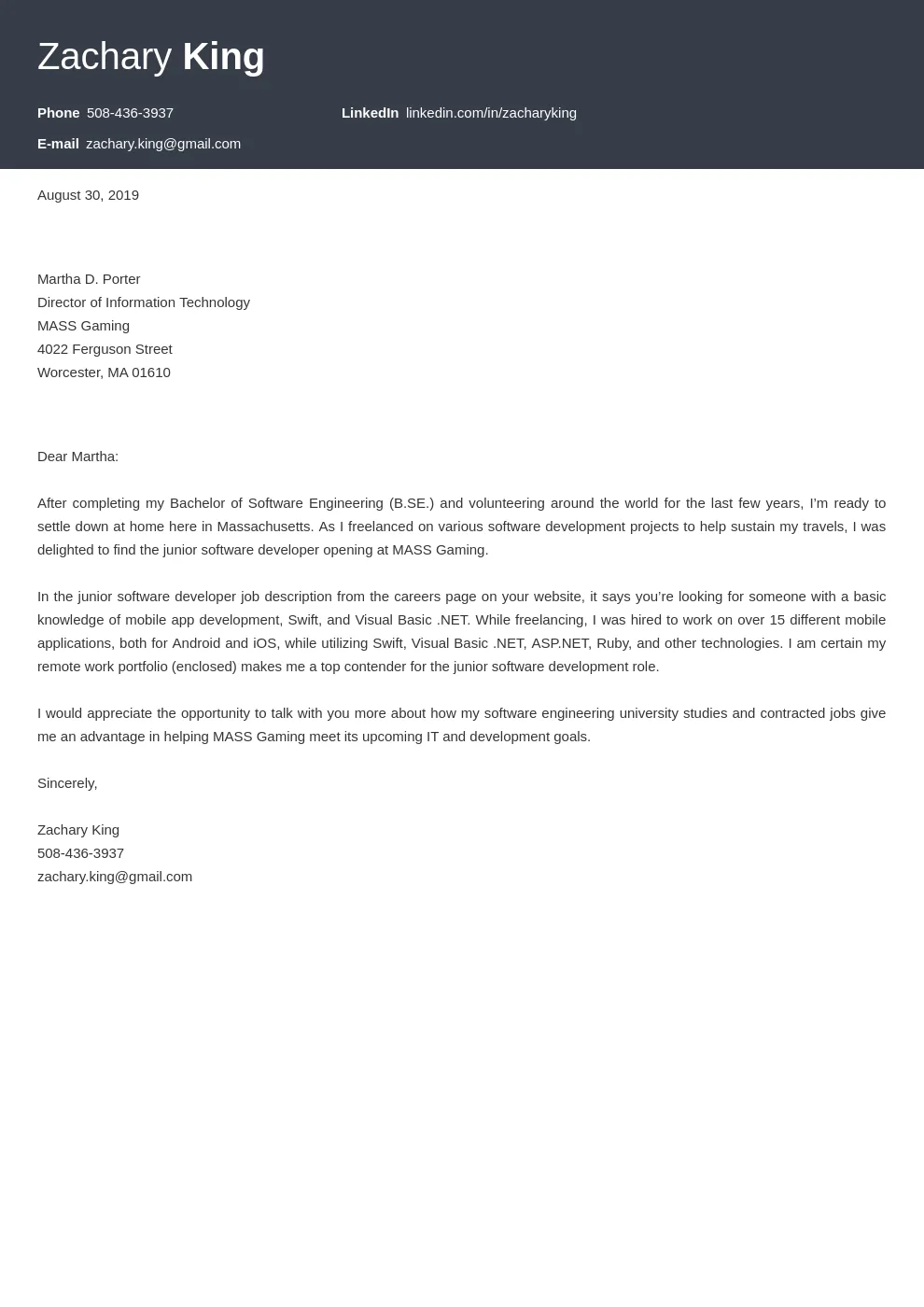
Carefully review the job description and identify the key skills, qualifications, and responsibilities. Then, tailor your cover letter to specifically address these requirements. Highlight the relevant experiences and skills that match the job description. Use the same keywords and phrases that are used in the job posting to demonstrate your understanding of the role and the company’s needs. Showing that you’ve taken the time to customize your cover letter increases your chances of getting noticed.
Quantifying Achievements
Whenever possible, quantify your achievements to demonstrate the impact you’ve made in past roles. Use numbers, metrics, and data to showcase your accomplishments. For example, instead of saying “Improved website performance,” you could say “Improved website loading speed by 30%, resulting in a 15% increase in user engagement.” Quantifying your achievements provides concrete evidence of your abilities and makes your cover letter more persuasive.
Closing Paragraph
In the closing paragraph, reiterate your interest in the position and the company. Summarize your key qualifications and why you believe you’re a good fit. Express your enthusiasm for the opportunity to contribute to their team. Thank the hiring manager for their time and consideration. Keep the tone positive and professional.
Call to Action
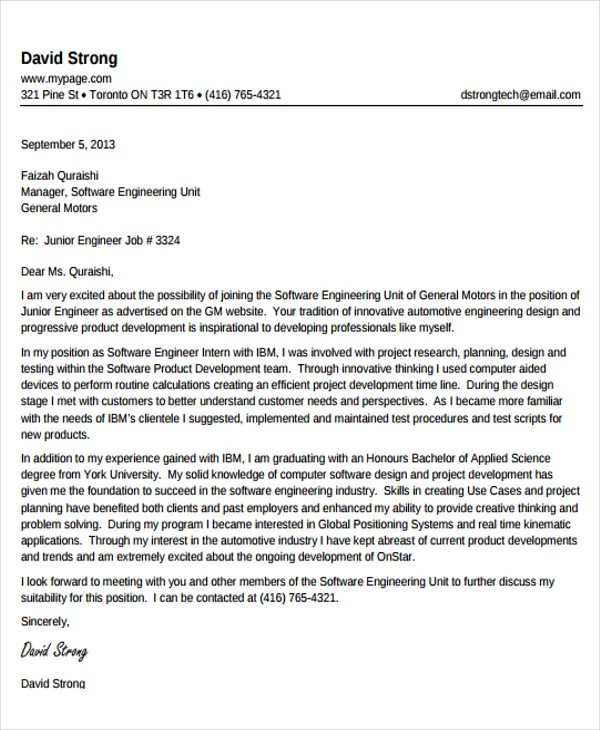
End your cover letter with a clear call to action. State your availability for an interview and express your eagerness to discuss your qualifications further. Provide your contact information one last time, just in case. This will make it easier for the hiring manager to follow up with you.
Formatting and Design
The formatting and design of your cover letter are important for creating a positive impression. A well-formatted document is easy to read and visually appealing. It demonstrates your attention to detail and professionalism. Pay close attention to the font, structure, and overall layout to create a cover letter that stands out.
Font and Readability
Choose a professional and readable font, such as Times New Roman, Arial, or Calibri. Use a font size of 11 or 12 points for the body text. Ensure there is sufficient spacing between lines and paragraphs to make the document easy on the eyes. Avoid using overly decorative or difficult-to-read fonts, as they can distract the reader.
Length and Structure
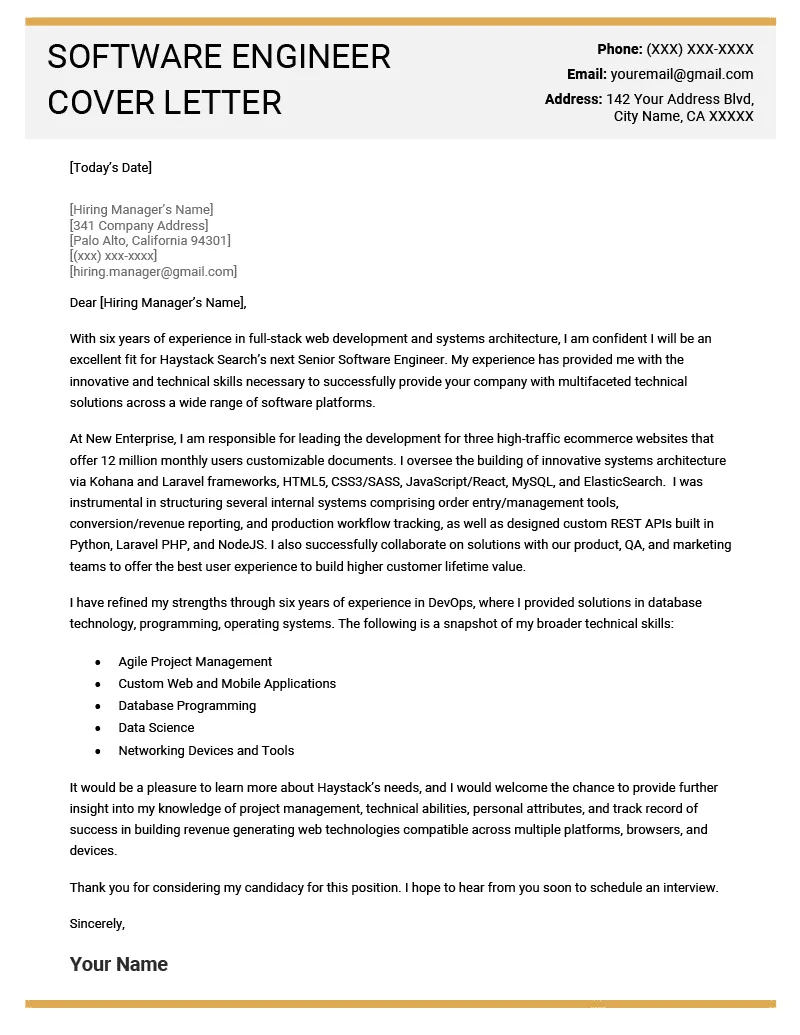
Keep your cover letter concise and to the point. Aim for a length of one page. Use a clear and logical structure with a professional salutation, opening paragraph, body paragraphs, closing paragraph, and call to action. Use headings and subheadings to break up the text and make it easy to scan. Use bullet points for highlighting key skills or achievements.
Proofreading and Editing
Proofreading and editing your cover letter are essential steps in ensuring that your application is polished and professional. Errors in grammar, spelling, and punctuation can damage your credibility and make a negative impression on the hiring manager. Take the time to carefully review your cover letter multiple times, or better yet, ask a friend or colleague to proofread it for you.
Common Mistakes to Avoid
There are several common mistakes that can undermine your cover letter and decrease your chances of getting an interview. Avoid these pitfalls to make a strong impression on the hiring manager. Be aware of these errors, and proofread your document before submitting.
Grammatical Errors
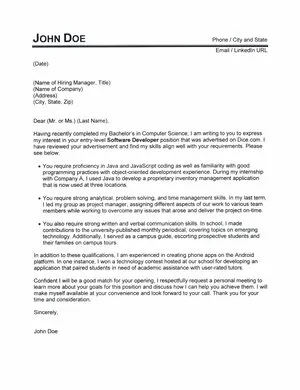
Grammatical errors can make you appear unprofessional and careless. Carefully check your cover letter for any mistakes in grammar, spelling, and punctuation. Use a grammar checker and ask a friend or colleague to proofread your letter for you. Correct any errors before submitting the application.
Generic Content
Avoid using a generic cover letter template that is not tailored to the specific job and company. Generic content shows that you haven’t taken the time to personalize your application. Customize your cover letter to each job by highlighting the relevant skills, experiences, and how you can contribute to their team.
Overly Informal Tone
Maintain a professional tone throughout your cover letter. Avoid using slang, colloquialisms, or overly casual language. The tone of your cover letter should reflect your professionalism and your respect for the hiring process. Always use a professional salutation and closing.
Software Development Cover Letter Examples
Looking at examples of software development cover letters can provide inspiration and guidance for creating your own. Search online for examples that match the type of role you’re applying for. Pay attention to the language, structure, and content used in the examples. Adapt the examples to your own skills and experience, tailoring them to each specific job application. Be sure to avoid simply copying the examples; instead, use them as a guide to create a unique and personalized cover letter that showcases your qualifications effectively.
